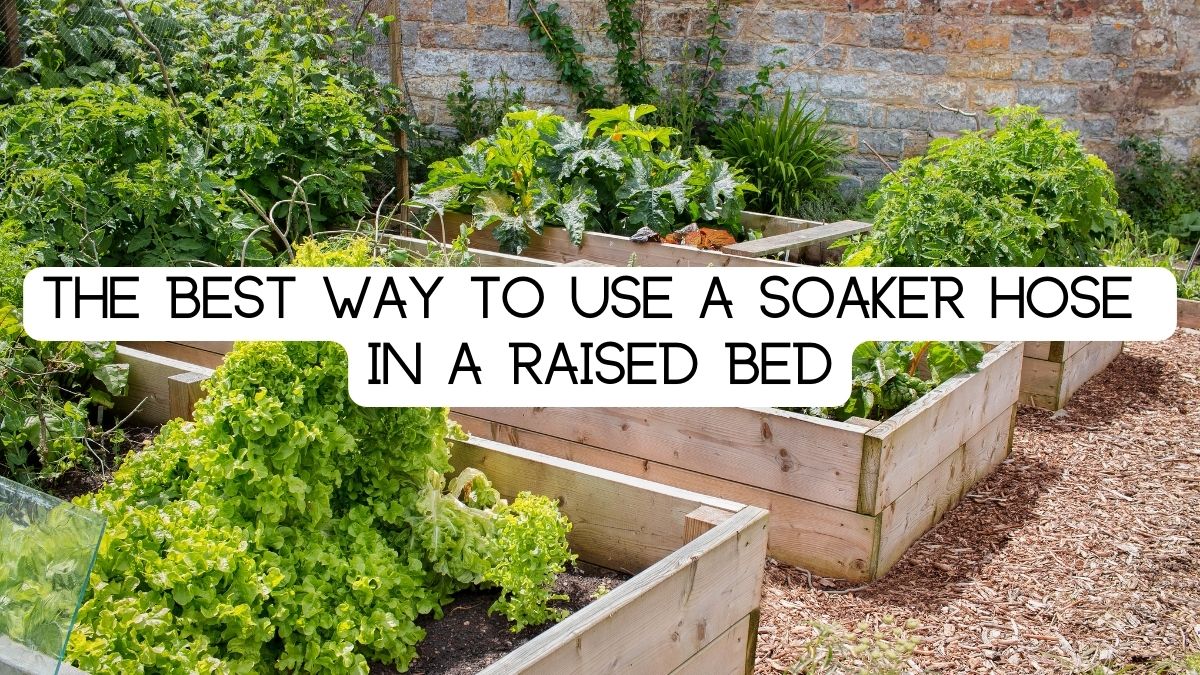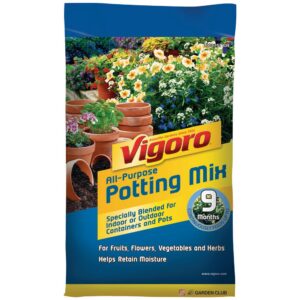Using a soaker hose in a raised bed can efficiently and effectively water your plants. Soaker hoses are designed to deliver water directly to the soil, minimizing water waste and ensuring that your plants receive the right amount of water they need to thrive.
By properly positioning and maintaining your soaker hose, adjusting water pressure, monitoring soil moisture, and watering at the right time, you can help your raised bed garden flourish while conserving water.
In this article, we'll explore tips for using a soaker hose in a raised bed to enjoy a healthy and thriving garden all season.

Read Next
Why A Soaker Hose?
A soaker hose is a very useful type of drip irrigation system. Drip irrigation refers to the moderate submission of water to soil via a device known as an emitter which is positioned at the foot of every plant. Small holes are punctured into the hose to use a soaker hose in a raised bed, allowing water to drip out.
When you have water running through the hose, it appears as if the hose is sweating or, if you like, weeping. Using a soaker hose in a raised bed is an efficient and effective way to water your plants without wasting water. As we all know, water is life and a scarce resource.
A soaker hose ensures no runoff, as the water trickles out through the tiny holes along the hose at a moderate speed, making it easy for the ground to absorb. Less water is therefore lost through evaporation.



Using the soaker hose in a raised bed is environmentally friendly compared to a sprinkler. A soaker hose delivers the appropriate amount of water to plants at the right rate while the plant foliage remains dry.
You are probably used to hand-watering your plants and are wondering how a soaker hose works or how to use a soaker hose in a raised bed. Let us see here in this useful guide for you.
Step By Step How To
You will want to have your soaker hoses wind in the garden at 18 -20 inches apart all through the bed. You do not require any special tools. Use scissors to cut holes of your desired size on the hose.
1. Unfolding The Hose
Be ready to get dirty and wet. Unfold the hose and stretch it out nicely. Inspect it to see if there are any leak points and to ensure that it works just fine. You might consider making it a bit wet to be easier to control and carry.
2. Joining Your Soaker Hose To The Garden Hose
Turn the tap on and let the hose begin to seep. The water pressure should be moderate, so you do not need to have the tap turned on very far. You do not require it to spray, strain, or make funny sounds.
3. Laying The Soaker Hose On The Ground
Make sure you have some sticks around. It is important to place some sticks into the ground so that they can guide you and secure the hose, thus keeping it away from the plants. Nobody wants to have their plants crushed.
4. Get Help
It might probably be very tasking, so getting someone to help is okay. Rome wasn't built in one day, nor was it built by one man. If you need help, get it right away.
You will need to be patient and have your problem-solving skills alert. However, if this is not you at all, have someone help you set up the soaker hose for using it on a raised bed.
5. Take Into The Terrain Of Your Garden
Lay the soaker hose in a manner that minimizes an uphill flow of the water. Lay it from corner to corner on the slope of your garden.
6. Know Where The Hose Ought To Be Placed
The soaker hose should be placed in a convenient place. It should be near the tap and at the periphery of the garden. You can do this by connecting the garden and soaker hose and laying it in the final position you require it to be in. You can then lay the whole hose.



Soaker Hose In Raised Bed Tips
- Properly position the soaker hose: The hose should be laid out in a straight line along the length of the raised bed. The holes on the hose should face downwards and be placed directly above the soil. Avoid overlapping or twisting the hose, which can cause uneven watering and dry spots.
- Adjust the water pressure: Soaker hoses work best at low water pressure. Too much water pressure can cause the water to spray out of the holes and create puddles, leading to water waste and uneven watering. Adjust the water pressure according to the manufacturer's instructions to ensure even watering.
- Monitor the soil moisture: Regularly check the soil moisture level to ensure your plants receive the right amount of water. Stick your finger into the soil to a depth of about an inch. If the soil feels dry, it's time to water. If wet or damp, hold off watering for a few more days.
- Water at the right time: Water your plants in the morning or evening when the temperatures are cooler. This reduces water evaporation and ensures your plants receive the needed water.
- Keep the hose clean: Soaker hoses can get clogged with dirt and debris over time, affecting the water flow. Regularly inspect and clean the hose to ensure that water is flowing smoothly. You can use a hose-end filter to help prevent clogging.
- Secured placement: Ensure you have secured the end you intend to start with. You can place heavy objects on it to prevent it from being pulled around and placed where you do not want it.
- Start at the bed's perimeter: Slowly and carefully lay the soaker hose between rows next to the plants. Ensure that you are as far as one or two inches from the foot of the plants. Remember to secure the soaker hose with sticks as you progress laying it.
- Wind the hose: Wind the soaker hose throughout the garden and make sure you space it rightly. If spacing it 18 inches apart is too wide, you can try spacing it at twelve (12) inches.
Looking for a soaker hose? Check out our Melnor Flat Soaker Hose review!
Conclusion
Using a soaker hose in a raised bed is a great way to water your plants. Save yourself from the tiresome job of hand-watering your flowers and plants.
Take care of your soaker hose if you want it to last and serve you for a long period. You can do this by covering it with mulch throughout the season that it is in use. Remove your soaker hose from the garden at the end of a particular season, carefully fold it up and hang it in your garage.
If the weather's favorable, you can water the plants every one or two days for half an hour. However, in adverse hot conditions, water the plants daily.
Using a soaker hose in a raised bed is one of the best ways to water your plants. It is an easy process to get the soaker hose working.
Don't be afraid to get a little dirty; it comes with gardening.






Comments
No Comments